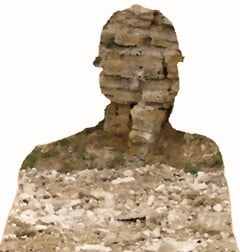From the rock face : Naming stones
Stone federation Great Britain’s Quarry Forum gives its opinion on issues relating to the stone industry from the point of view of companies that extract dimensional stone from opencast and underground quarries and mines.
A Stone by any Other Name…
Russian author Vera Nazarian once wrote: “Most of us have nicknames – annoying, endearing, embarrassing. But what is your true name? It is not necessarily your given name. But it is the one to which you are most eager to respond to when called.”
The naming of stone – the correct naming of stone – is a significant issue.
For many years there has been contention between firms choosing to use a stone’s true name and those using alternative commercial or marketing names.
The big change came in July 2013 when the new CE Marking legislation required that any stone covered by a harmonised European Standard should carry a CE Mark and the CE Certificate and Declaration of Performance should state the traditional name of the stone.
One of the key drivers behind this change was to ensure that customers know what they are getting. We’ve heard far too many horror stories of companies supplying a product labelled as ‘Yorkstone’, for example, purporting to come from a vague but English-sounding quarry that in fact come from an unnamed source in India or China
Stone knows no political boundaries, therefore stones from India and China may be perfectly suitable for the intended application, but can they legitimately claim to be Yorkstone? We don't think so. Especially as the long journey to reach the UK will deprive them of the lowest carbon footprint status of stone from a British quarry.
If they are not being sold under their true name, there is a greater risk that they will not be from an ethical or environmentally sound source, as there will be no traceability. Neither will there be any assurance of the properties and qualities of the stone.
And if a client has specified Yorkstone, they might well be paying a higher price than if they had ordered Indian or Chinese stone.
There are high street, even high end, retailers that give their stones imaginative brand names. They seek to protect specifications for their product and thereby cover the costs of their marketing and high street presence. But the client is left paying top prices and being unable to access the wealth of technical and practical experience that the stone industry will have of that stone. The client is completely reliant on the retailer for all the technical information without any redress to the stone processor or the quarry or mine from which the stone came.
At the end of 2014, a number of Quarry Forum members submitted their thoughts on this issue as part of an EU Green Paper looking at providing geographical protection for stone names. The measure would give to stones such as Portland, Cotswold limestone and Welsh slate (to name but a few) the same protection that Champagne, Parma Ham and Melton Mowbray pork pies currently enjoy.
Our strength of feeling about the issues surrounding the correct naming of stone stems not only from the legal requirements to use the correct names but also from a desire to help the architect, designer and client to have confidence that they are getting what they think they are getting.

